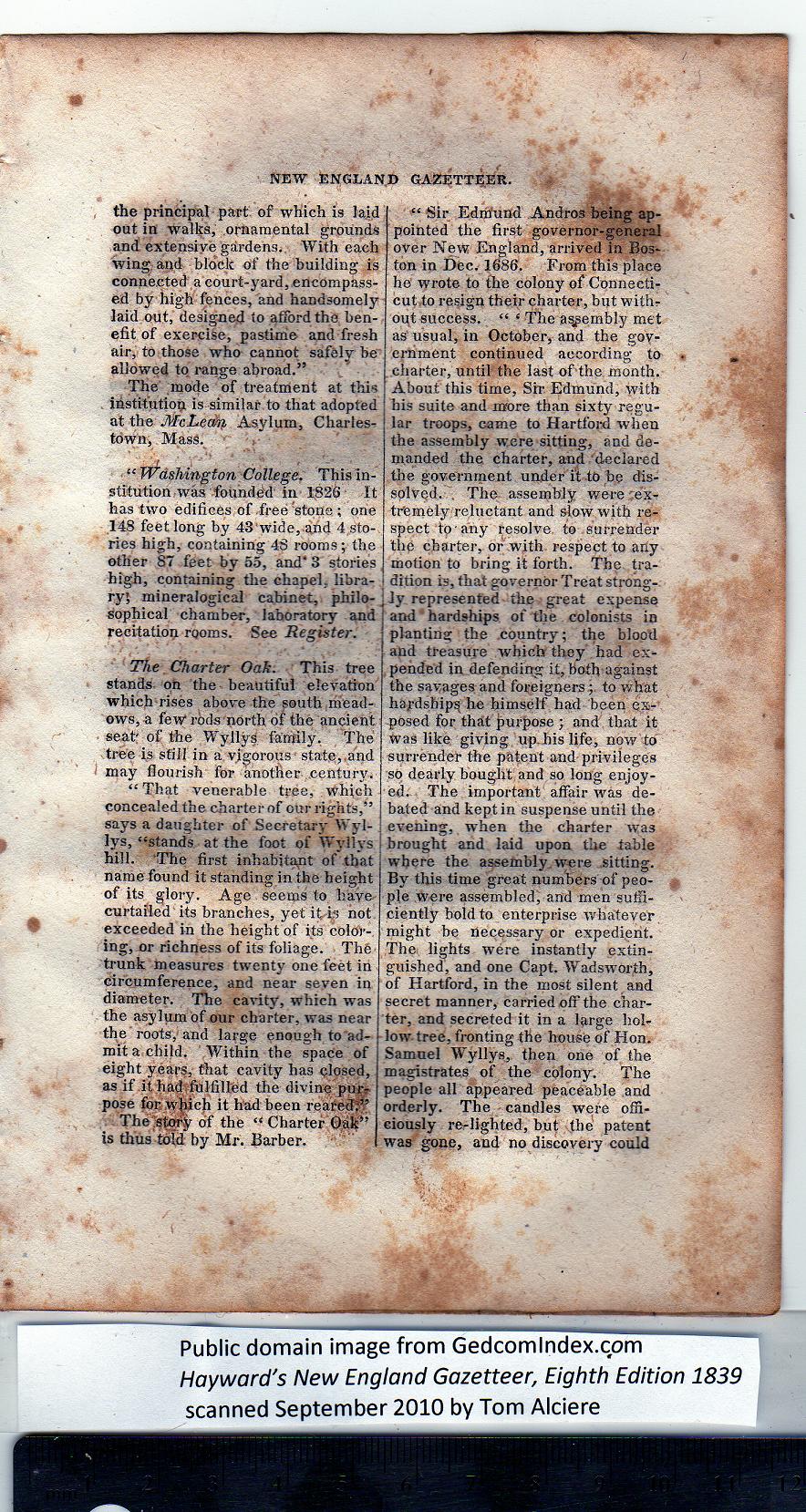|
the principal part of which is laid
out in walks, ornamental grounds
and extensive gardens. With each
wing and block of the building is
connected a court-yard, encompass-
ed by high fences, and handsomely
laid out, designed to afford the ben-
efit of exercise, pastime and fresh
air, to those who cannot safely he
allowed to range abroad.”
The mode of treatment at this
institution is similar to that adopted
at the McLean Asylum, Charles-
town, Mass.
“J^ashington College. This in-
stitution was founded in 1826 It
has two edifices of free stone ; one
14S feet long by 43 wide, and 4 sto-
ries high, containing 48 rooms; the
other 87 feet by 55, and' 3 stories
high, containing the chapel, libra-
ry; mineralogical cabinet, philo-
sophical chamber, laboratory and
recitation rooms. See Register.
The Charter Oak. Thi3 tree
stands on the beautiful elevation
which rises above the south mead-
ows, a few rods north of the ancient
seat' of the Wyllys family. The
tree is still in a vigorous state, and
may flourish for another century.
“That venerable tree, whiGh
concealed the charter of our rights,”
says a daughter of Secretary Wyl-
lys, “stands at the foot of Wyllys
hill. The first inhabitant of that
name found it standing in the height
of its glory. Age seems to have
curtailed its branches, yet it is not
exceeded in the height of its color-
ing, or richness of its foliage. The
trunk measures twenty one feet in
circumference, and near seven in
diameter. The cavity, which was
the asylum of our charter, was near
the roots, and large enough to ad-
mit a child. Within the space of
eight years, that cavity has closed,
as if it had fulfilled the divine purr
pose for which it had been reared?**
The stofy of the “ Charter Oak”
is thus told by Mr. Barber. |
“ Sir Edm'und Andros being ap-
pointed the first governor-gene»l
over New England, arrived in Bos-
ton in Dec. 1686. From this place
he wrote to the colony of Connecti-
cut to resign their charter, but with-
out success. “ e The a^embly met
as usual, in October, and the gov-
ernment continued according to
charter, until the last of the month.
About this time, Sir Edmund, with
his suite and more than sixty regu-
lar troops, came to Hartford when
the assembly were sitting, and de-
manded the charter, and declared
the government under it to be dis-
solved. . The assembly were ex-
tremely reluctant and slow with re-
spect to-any resolve, to surrender
the charter, or with respect to any
motion to bring it forth. The tra-
dition is, that governor Treat strong-
ly represented the great expense
and hardships of the colonists in
planting the country; the blood
and treasure which they had ex-
pended in defending it, both against
the savages and foreigners; to what
hardships he himself had been ex-
posed for that purpose ; and that it
was like giving up his life, now to
surrender the patent and privileges
so dearly bought and so long enjoy-
ed. The important affair was de-
bated and kept in suspense until tbe
evening, when the charter was
brought and laid upon the table
where the assembly, were sitting.
By this time great numbers of peo-
ple were assembled, and men suffi-
ciently hold to enterprise whatever
might be necessary or expedient.
The lights were instantly extin-
guished, and one Capt. Wadsworth,
of Hartford, in the most silent and
secret manner, carried ofi'the char-
ter, and secreted it in a large hol-
low tree, fronting the house of Hon.
Samuel Wyllys, then one of the
magistrates of the colony. The
people all appeared peaceable and
orderly. The candles were offi-
ciously re-lighted, but the patent
was gone, and no discovery could |
